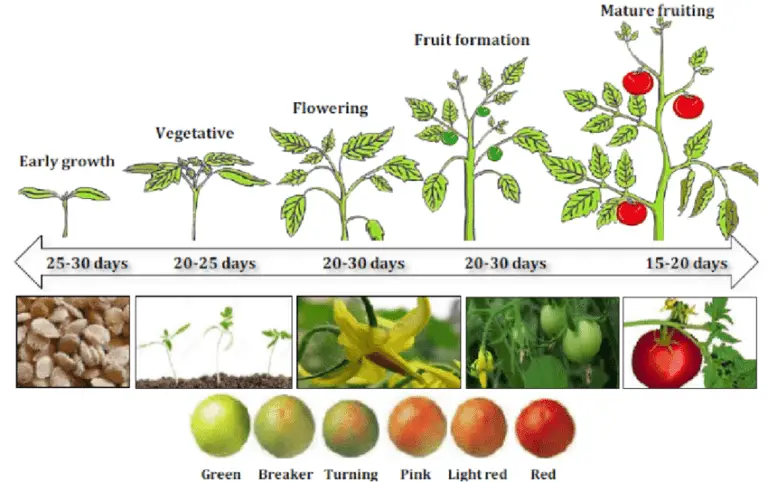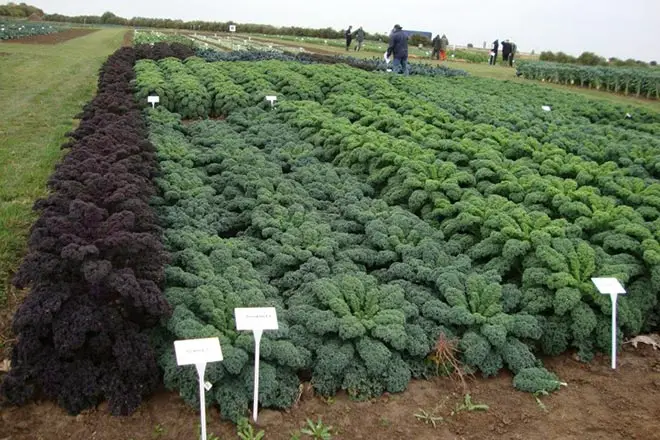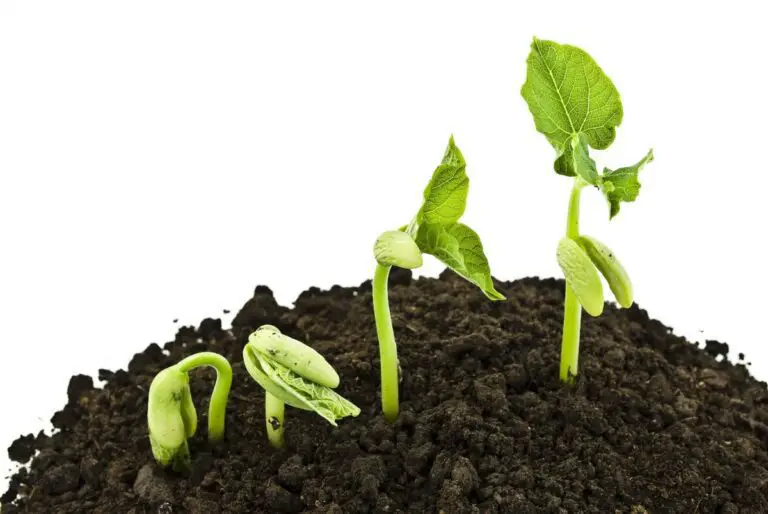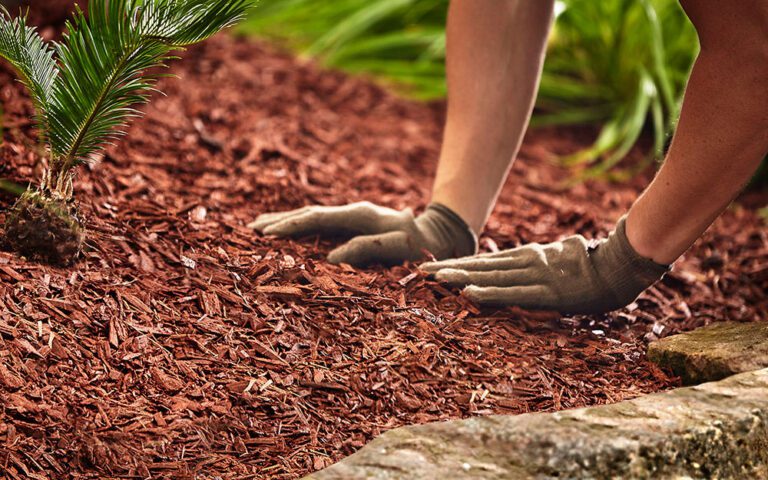The Ultimate Guide to Traditional and Hydroponic Grow Media: A Comparison of the Different Types of Grow Media for Your Plants
Table of Contents
What is Grow Media and Why is it Important for Plant Growth?
Grow media refers to the materials or substances used to support plant growth in various cultivation systems. It plays a crucial role in providing plants with essential nutrients, oxygen, and water, as well as anchoring their roots. Whether you are a seasoned gardener or a beginner, understanding the importance of grow media is essential for successful plant cultivation.
One of the primary functions of grow media is to provide a stable physical structure for plants to establish their root systems. It serves as a medium for anchoring the roots, allowing them to penetrate and explore the substrate for nutrients and water. Moreover, grow media provides aeration to the roots, ensuring that they receive the oxygen necessary for respiration. Without a well-aerated root zone, plants may experience stunted growth or even root rot.
In addition to physical support and oxygenation, grow media also acts as a reservoir for nutrients and water. It stores and releases these essential elements to the plants as needed, promoting healthy growth and development. Different types of grow media have varying water-holding capacities, drainage properties, and nutrient retention capabilities, allowing gardeners to choose the most suitable medium for their plants’ specific needs.
By understanding the significance of grow media for plant growth, you can make informed choices about the type of medium to use in your gardening endeavors. Whether it’s traditional soil-based media or hydroponic substrates, selecting the right grow media will contribute to optimal plant health, increased yield, and successful cultivation.

Understanding Traditional Grow Media: Soil and its Variations
Soil is one of the most widely used traditional grow media for gardening and plant cultivation. It provides a natural and nutrient-rich environment for plants to grow and thrive. However, it’s essential to understand that soil comes in various types and variations, each with its own unique properties and suitability for different plants.
The composition of soil can vary depending on factors such as climate, geological location, and the presence of organic matter. Some common types of soil include sandy soil, clay soil, loamy soil, and silt soil. Sandy soil, for example, is well-draining but can lack essential nutrients, while clay soil retains moisture but can be compacted and poorly aerated. Loamy soil, on the other hand, is a balanced mix of sand, silt, and clay, making it ideal for many plants.
Knowing the characteristics of different soil types is crucial for gardeners as it helps them make informed decisions about plant selection, watering frequency, and nutrient supplementation. Understanding the variations in soil composition and structure allows for better management and optimization of plant growth. By assessing the soil type and its suitability, gardeners can take appropriate measures to enhance fertility, improve drainage, and prevent nutrient deficiencies, ultimately resulting in healthier and more productive plants.

The Pros and Cons of Using Soil as Grow Media
Soil is one of the most traditional and widely used grow media for plants. Its popularity can be attributed to its natural abundance and familiarity to gardeners. However, like any other growing medium, soil has its own set of advantages and disadvantages.
One of the major pros of using soil as grow media is its ability to provide plants with a plethora of essential nutrients. Soil is rich in organic matter and minerals that are crucial for plant growth and development. Moreover, soil acts as a reservoir for water, helping to retain moisture and prevent waterlogging. This, in turn, ensures that plants have a constant supply of water, promoting healthy root growth.
On the other hand, there are certain cons associated with soil as grow media. One of the main drawbacks is the risk of soilborne diseases and pests. Soil can harbor harmful pathogens and insects that can damage plants and hinder their growth. Additionally, soil quality can vary greatly depending on location, making it challenging to maintain consistent plant nutrition. This can result in nutrient deficiencies or excesses, affecting the overall health and productivity of plants.
Exploring Alternative Traditional Grow Media Options
When it comes to traditional grow media, soil has long been the go-to choice for many gardeners. However, there are alternative options worth exploring that can provide various benefits for plant growth. One alternative to traditional soil is coco coir, which is derived from the husk of coconuts. Coco coir is known for its excellent water holding capacity and ability to provide adequate aeration to plant roots. Peat moss is also known to be rich in organic matter, providing essential nutrients for plant growth. It is important to note, however, that peat moss is not a sustainable option due to environmental concerns.
Another alternative to traditional grow media is perlite. Perlite is a type of volcanic glass that has been heated and expanded to create a lightweight, porous material. It is commonly used to improve aeration and drainage in soil mixtures, allowing plant roots to access oxygen more readily. Perlite also helps to prevent compaction in soil, ensuring that water can flow freely and roots can grow and spread efficiently. Additionally, perlite is pH-neutral and sterile, reducing the risk of soil-borne diseases and providing a clean and stable environment for plants to thrive. These alternative traditional grow media options offer gardeners the opportunity to experiment with different materials and techniques to achieve optimal plant growth and success.
An In-depth Look at Hydroponic Grow Media
Hydroponic grow media refers to the inert materials used in hydroponic systems to help support the plants’ root system. Unlike traditional soil-based gardening methods, hydroponic systems rely on a variety of different media to provide stability, moisture retention, and nutrient delivery directly to the plant roots.
One commonly used hydroponic grow media is perlite. Perlite is a lightweight volcanic glass that has been expanded through heating. It provides excellent drainage and aeration properties, allowing the roots to receive the necessary oxygen they need to grow. Another popular option is rockwool, which is made from spun volcanic rock fibers. Rockwool provides a stable structure for the plants and retains moisture while still allowing for adequate airflow.
These hydroponic grow media offer many benefits over traditional soil-based grow media. For starters, they eliminate the risk of soil-borne diseases and pests, as the inert materials are sterile. Additionally, hydroponic systems using these media offer precise control over nutrient delivery, allowing for optimal plant growth and higher yields. Lastly, these media can be reused, making them more sustainable and cost-effective in the long run. However, it’s important to note that each type of hydroponic grow media has its own specific requirements and considerations, so it’s crucial to choose the one that best suits your plants’ needs and your desired gardening setup.

Different Types of Hydroponic Grow Media and their Benefits
Hydroponic gardening is gaining popularity among gardening enthusiasts due to its numerous advantages over traditional soil-based gardening. One of the key elements in hydroponics is the grow media, which serves as a support system for the plants and helps deliver nutrients and water. There are various types of hydroponic grow media available, each with its own unique benefits.
| Grow Media | Material Source | Properties | Benefits |
|---|---|---|---|
| Rockwool | Spun Volcanic Rock | Excellent water retention and aeration properties, stable for root growth | Prevents overwatering, provides a stable environment |
| Perlite | Volcanic Glass | Extremely porous, improves air circulation, promotes drainage | Ideal for oxygen-hungry plants, lightweight and efficient |
| Coconut Coir | Coconut Husks | Excellent water retention, sustainable alternative to peat moss | Balanced moisture level, good aeration, sustainable option |
| Clay Pellets | Expanded Clay (Hydroton) | Lightweight, inert clay balls, retain moisture, provide good drainage | Stable support for plants, retains moisture well |
Comparing Traditional and Hydroponic Grow Media: Which is Better?
Traditional grow media, such as soil, has long been the go-to choice for plant cultivation. It provides a natural environment and offers a range of nutrients required for plant growth. Soil also acts as a buffer, retaining moisture and providing stability to the plant’s roots. However, it is not without its drawbacks. Soil can be heavy, making it difficult to transport and causing drainage issues. It may also contain pests, diseases, or weed seeds that can harm the plants. Moreover, the quality of soil can vary greatly, and it may require additives or amendments to meet the specific needs of different plants.
On the other hand, hydroponic grow media offers a soil-less alternative that is gaining popularity among gardening enthusiasts. Hydroponics involves growing plants in nutrient-rich water rather than soil. This method allows for precise control over the plant’s environment, including nutrients, pH levels, and moisture content. Hydroponic media, such as perlite, coconut coir, or rockwool, provide support to the plant roots while allowing for optimal oxygenation and nutrient uptake. Additionally, hydroponics eliminates the risk of soil-borne diseases and pests, resulting in healthier plants.
Factors to Consider When Choosing Grow Media for Your Plants
When it comes to choosing the right grow media for your plants, there are several factors that need to be taken into consideration. These factors can significantly impact the overall health and growth of your plants, so it is important to make an informed decision.
One of the key factors to consider is the water retention ability of the grow media. Different plants have varying water requirements, and finding a grow media that can retain water appropriately for your specific plants is crucial. For example, plants that require more moisture, such as leafy greens, may benefit from a grow media with higher water retention properties, while plants that prefer drier conditions, like cacti, may require a grow media with lower water retention.
Another factor to consider is the nutrient-holding capacity of the grow media. Nutrients are essential for plant growth and development, and the grow media you choose should be able to hold and release these nutrients effectively. Clay-based media, for instance, have a higher nutrient-holding capacity compared to sandy media, making them a better choice for nutrient-hungry plants.
The pH level of the grow media is also an important parameter to consider. Different plants thrive in different pH ranges, so it is crucial to choose a grow media with a pH level that is suitable for the plants you intend to grow. Conducting a soil test to determine the pH level of your grow media can help guide you in making the right choice.
Furthermore, the structure and porosity of the grow media should not be overlooked. The structure refers to the physical arrangement of the particles in the media, while porosity relates to the space between the particles. Both of these factors influence the flow of air, water, and nutrients within the root zone. A well-structured and porous grow media promotes healthy root development and allows for proper oxygenation and drainage.
Lastly, consider the sustainability and environmental impact of the grow media you choose. Opting for organic and eco-friendly grow media can contribute to the overall well-being of both your plants and the planet. Materials such as coconut coir, rice husks, or recycled and compostable products are excellent alternatives to traditional grow media options.
By carefully assessing these factors, you can select the most suitable grow media for your plants, ensuring optimal growth and health.
Understanding the Nutrient Requirements of Different Grow Media
Different types of grow media have varying nutrient requirements, which are essential for plant growth and development. Understanding these requirements is crucial for gardeners and hydroponics enthusiasts to ensure optimal plant health and vitality.
Soil, being a traditional grow media, contains essential nutrients that are released slowly over time. These nutrients are present in organic matter, minerals, and decomposed organic material. Variations in soil composition, such as clay, silt, and sand, affect nutrient availability and retention. Additionally, soil pH levels play a significant role in nutrient absorption by plants. Acidic soil favors the availability of certain nutrients like iron and manganese, whereas alkaline soil promotes the absorption of calcium and magnesium. It is important to regularly test the soil’s nutrient levels and pH to ensure plants receive the necessary nutrients for healthy growth.
In contrast, hydroponic grow media, which includes materials like perlite, rockwool, and coco coir, rely on nutrient solutions for plant nutrition. As grow media in hydroponic systems do not contain organic matter like soil, all essential nutrients must be provided through nutrient solutions tailored to plant requirements. These solutions, consisting of mineral salts dissolved in water, necessitate regular monitoring and adjustment to maintain proper nutrient balance. It is vital to understand the specific nutrient requirements of different plants and adjust the nutrient solution accordingly to achieve optimal growth and productivity.

Maintaining and Managing Grow Media for Optimal Plant Growth
Maintaining and managing the grow media in your garden is crucial for maximizing plant growth and ensuring optimal health and yield. Whether you are using traditional soil or hydroponic grow media, proper maintenance techniques can make a significant difference in the overall success of your gardening endeavors.
One important aspect of managing grow media is ensuring adequate moisture levels. Regularly monitoring the moisture content is essential to prevent both over-watering and under-watering, as both can have detrimental effects on plant health. Implementing a watering schedule that is tailored to the specific needs of your plants and grow media type can help maintain a healthy balance and prevent water-related issues, such as root rot or nutrient leaching.
Another important factor in maintaining grow media is nutrient replenishment. Over time, the nutrients in the media can become depleted, especially in hydroponic systems where plants solely rely on nutrient solutions. Regularly testing the nutrient levels and adjusting the nutrient solutions accordingly can ensure that your plants have access to the essential elements they need for optimal growth. Additionally, periodically flushing the grow media with water or nutrient solution can help remove any buildup or excess salts that may accumulate over time.
By implementing these maintenance strategies, you can ensure that your grow media provides the necessary support and nutrients for your plants, leading to healthier and more productive gardens. Stay tuned for more tips and techniques on maximizing plant health and yield with the right grow media.
Stay tuned for more tips and techniques on maximizing plant health and yield with the right grow media.
| Tip | Description |
|---|---|
| Monitor Moisture Levels | Regularly monitor moisture levels to prevent over-watering or under-watering. |
| Tailor Watering Schedule | Implement a watering schedule tailored to the specific needs of your plants and grow media type. |
| Prevent Water-Related Issues | Prevent water-related issues such as root rot or nutrient leaching by ensuring proper drainage and moisture control. |
| Regular Nutrient Level Testing | Test nutrient levels regularly and adjust solutions accordingly, especially in hydroponic systems. |
| Periodic Flushing of Grow Media | Periodically flush grow media with water or nutrient solution to remove buildup or excess salts. |
| Ensure Grow Media Support and Nutrients | Ensure that your grow media provides necessary support and nutrients for optimal plant growth. |
Tips for Maximizing Plant Health and Yield with the Right Grow Media
When it comes to maximizing plant health and yield, choosing the right grow media is critical. The grow media you select can have a significant impact on the growth, development, and productivity of your plants. Here are a few tips to help you make the most out of your chosen grow media:
| Point | Description |
|---|---|
| Understand Plant Specific Needs | Different plants have varying requirements for grow media. Research and understand the specific needs of your plants for optimal growth. |
| Consider Nutrient Availability | Some media naturally contain nutrients, while others require nutrient solutions. Adjust fertilization practices based on your chosen grow media. |
| Monitor Moisture Levels | Regularly check and adjust moisture levels to prevent overwatering or under-watering, ensuring proper hydration for your plants. |
| Periodically Check pH Levels | Test and adjust pH levels as needed to optimize nutrient availability for plants in your chosen grow media. |
By following these tips, you can ensure that your selected grow media provides the best possible conditions for your plants’ health and productivity. Remember to regularly assess and adjust your practices as needed to achieve the desired results.
Common Mistakes to Avoid When Using Grow Media for Your Plants
Avoiding common mistakes when using grow media for your plants is crucial to ensure optimal plant growth and yield. One common mistake is overwatering the plants. It is important to remember that while water is essential for plant growth, excessive moisture can lead to root rot and other fungal diseases. It is recommended to check the moisture level of the grow media before watering and only provide water when it is necessary.
Another mistake to avoid is using the wrong type of grow media for your plants. Different plants have different needs when it comes to grow media. For example, some plants thrive in soil-based media, while others perform better in hydroponic systems. It is important to research and understand the specific requirements of your plants to choose the appropriate grow media. Using the wrong medium can hinder nutrient absorption and affect overall plant health.
By being mindful of these common mistakes, you can ensure that your plants receive the best care and create an environment conducive to their growth. Remember to monitor moisture levels and choose the appropriate grow media for your plants’ needs. In doing so, you will be on your way to successfully cultivating healthy and thriving plants.
Future Trends in Grow Media for Sustainable Plant Cultivation
In recent years, the field of sustainable plant cultivation has seen significant advancements in grow media technology. As gardeners and agriculturalists strive to reduce their environmental impact and maximize plant health and yield, the development of innovative and eco-friendly grow media has become a top priority. Future trends in grow media for sustainable plant cultivation are focused on enhancing nutrient availability, water retention, and root aeration, while minimizing resource consumption and waste production.
One emerging trend in grow media is the use of organic and biodegradable materials. As awareness of the harmful effects of plastic pollution grows, gardeners are seeking alternatives to traditional synthetic grow media. Organic materials such as coconut coir and peat moss are becoming popular choices due to their ability to retain water and nutrients, while also providing good aeration for roots. These renewable and biodegradable options not only reduce waste but also contribute to building healthy soil ecosystems. Biochar not only enhances nutrient retention and reduces water consumption but also acts as a carbon sink, addressing climate change concerns.
What are some emerging trends in grow media for sustainable plant cultivation?
Some emerging trends include the use of coconut coir as a sustainable alternative to traditional soil, the incorporation of biochar for improved nutrient retention, and the development of synthetic grow media tailored for specific plant species.
How does coconut coir compare to traditional soil as a grow media?
Coconut coir is a more sustainable option as it is a byproduct of coconut processing and can be easily renewed. It also has excellent water retention and aeration properties, making it a suitable alternative to traditional soil.
What is biochar and how does it benefit plant growth?
Biochar is a type of charcoal produced from organic waste materials. Its porous structure helps retain nutrients and water in the grow media, promoting better nutrient uptake and reducing the need for frequent watering.
Are there any specific types of plants that thrive better in hydroponic grow media?
Hydroponic grow media, such as clay pebbles or perlite, can be beneficial for a wide range of plants, including leafy greens, herbs, and flowering plants. However, it may not be suitable for plants with large root systems or those that require a significant amount of support.
How do nutrient requirements differ between traditional grow media and hydroponic grow media?
Traditional grow media, like soil, naturally contain some nutrients, whereas hydroponic grow media relies on nutrient solutions to provide all the necessary elements for plant growth. Therefore, hydroponic systems require more precise nutrient management to ensure optimal plant health.
What are some common mistakes to avoid when using grow media for plant cultivation?
Some common mistakes include overwatering the grow media, using poor-quality or contaminated grow media, neglecting proper pH and nutrient monitoring, and failing to provide adequate drainage for the plants.
What can be expected in the future of grow media for sustainable plant cultivation?
The future of grow media may involve the development of more advanced synthetic materials with improved water and nutrient retention capabilities, the utilization of waste materials for sustainable alternatives, and the integration of smart technologies to enhance plant growth and monitoring.

Beck Wakeford is a dedicated writer at SouthElMonteHydroponics, with a fervent enthusiasm for agriculture and technological innovation. Armed with a degree in Agricultural Engineering from a leading university, Beck specializes in hydroponic systems design, automation, and optimization. Their passion for merging traditional farming with cutting-edge technology drives them to explore novel solutions for sustainable food production. Beck’s expertise and keen interest in the intersection of engineering and agriculture make them a valuable asset in the quest for efficient and eco-friendly farming practices. Through their writing, Beck aims to inspire others to embrace the potential of hydroponics in shaping a more sustainable future.







